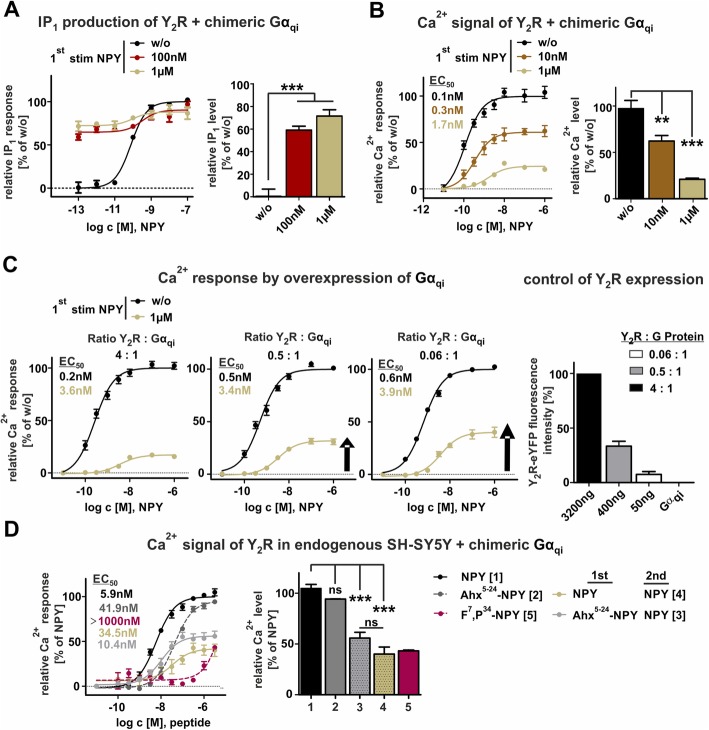Fig. 4.
Gαq signal transduction is reduced but G protein overexpression counteracts the effect in HEK293 cells. a Concentration-response curves of transiently co-transfected HEK293-hY2R + Gαqi were measured by IP–accumulation assay, using the chimeric G protein as a tool. Prolonged IP signal was observed after first stimulation with 100 nM (red) or 1 μM (olive-green), subsequent washing and 60 min recover of receptor in ligand free media compared to control curve without stimulation (w/o, black). b Decreased Ca2+ response from transiently transfected HEK293-hY2R-eYFP cells was obtained after stimulation with either 10 nM (brown) or 1 μM (olive-green) for 60 min at 37 °C followed by subsequent washing and 60 min recycling. c Overexpression of G protein and modifying the ratio between receptor and G protein led to a partial gain of Ca2+ signal after stimulation with 1 μM NPY, followed by washing step and 60 min recovery. Fluorescence intensity was investigated to quantify the receptor-eYFP fusion protein. d Data were confirmed by testing Gαqi-signaling with SH-SY5Y cells that endogenously expressing Y2R, and were transiently transfected with the chimeric Gqi protein. We observed an attenuated Ca2+-response for receptors stimulated either with 1 μM NPY (olive-green) or 1 μM Ahx5–24-NPY (light grey), a selective Y2R agonist, and stimulated with NPY in a second experiment. Treatment with F7, P34-NPY, a selective Y1R agonist (berry) proved Y2R specificity. Experiments represent data n ≥ 3; significance was determined by one-way ANOVA, Tukey post test, ns: not significant, ***: P < 0.0001

